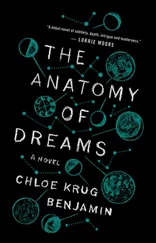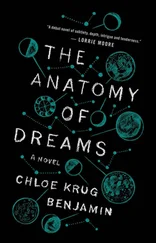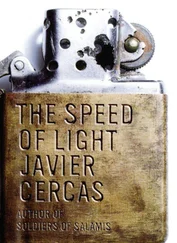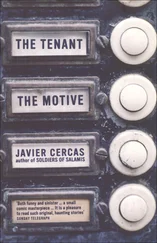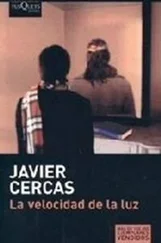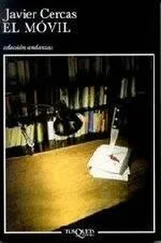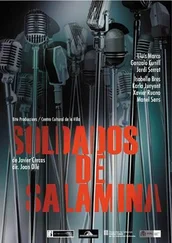‘Some military men and democratic politicians have frequently reproached Suárez for this way of proceeding. .’Among them, for example, Alfonso Osorio ( Trayectoria de un ministro de la Corona , p. 277), or Sabino Fernández Campo (Javier Fernández López, Sabino Fernández Campo. Un hombre de estado , Barcelona, Planeta, 2000, pp. 98–103). As for the time it took Suárez to decide to legalize the Communist Party, in December 1976 the Prime Minister assured Ramon Trias Fargas, a Catalan nationalist, leader of the then still illegal Esquerra Democràtica de Catalunya, that ‘he couldn’t put the democratization in danger for a detail like negotiating with a Communist’ (Jordi Amat, El laberint de la llibertat Vida de Ramon Trias Fargas , Barcelona, La Magrana, 2009, p. 317); in January 1977, when a commission of parties of the democratic opposition met with Suárez to tackle the legalization of the political parties, the Prime Minister refused to discuss that of the PCE (Sartorius and Sabio, El final de la dictadura , p. 765); and still in the middle of February, according to Salvador Sánchez-Terán — at that time the civil governor of Barcelona and a few months later adviser to the Prime Minister — ‘the unofficial thesis [. .] was that the legalization of the PCE could not be dealt with by the Suárez government and should be reserved for the first democratic Cortes; which implied that the PCE could not stand as such at the general elections’; see Sánchez-Terán, Memorias. De Franco a la Generalitat , Barcelona, Planeta, 1988, p. 248.
‘The scene [. .] could have happened like this. .’See for example the account by Pardo Zancada ( 23-F. La pieza que falta , pp. 71–73), who attended General Ortín’s funeral.
Gutiérrez Mellado is quoted in Puell de la Villa, Manuel Gutiérrez Mellado , p. 202; or see the audio-visual report by Victoria Prego, ‘Asalto a la democracia’, in El camino de la libertad , Barcelona, Planeta/De Agostini, 2008.
Gutiérrez Mellado’s quote is in José Oneto, Los últimos días de un presidente. De la dimisión al golpe de estado , Barcelona, Planeta, 1981, p. 152. Josep Melià tells the story in a rather different way in Así cayó Adolfo Suárez , p. 111. The anecdote about Suárez and Gutiérrez Mellado was recalled by the former on various radio and television programmes. See the Radio Nacional de España document, Manuel Gutiérrez Mellado. La cara militar de la Transición , June 2006, quoted by Manuel de Ramón, Los generales que salvaron la democracia , Madrid, Espejo de Tinta, 2007, p. 62.
‘His physical health was not bad. .’After Suárez’s resignation there was much speculation about his health problems, to which some attributed part of the responsibility for it, or at least for his paralysis during the autumn and winter of 1980. The speculation lacked any foundation: Suárez did not have health problems at that time, although he did during the previous autumn, when he suffered excruciating headaches for two months and had to be treated by doctors for several hours a day, until they discovered that he did not have a brain tumour but rather a simple dental problem. Suárez himself tells this in his interview with Sol Alameda; Santos Juliá et al, eds., Memoria de la transición , p. 459. See also ‘La buena salud del presidente Suárez’, in Justino Sinova, ed., Historia de la transición , vol. II, pp. 648–649.
11. Josefina Martínez, ABC , 27.9.2007.
The King is quoted in the extract of El Príncipe y el Rey , by José García Abad, published in El Siglo , no. 781, 31 March 2008.
The text of the King’s speech is in Juan Carlos I, Discursos. 1975–1995 , Madrid, Departamento de Publicaciones del Congreso de los Deputados y el Senado, 1996, pp. 280–281.
‘. . according to some sources. .’See Charles Powell, Juan Carlos, un rey para la democracia , Barcelona, Ariel/Planeta, Barcelona, 1995, pp. 278–279. A sentence from a UCD leader could endorse this version of what happened between the King and Suárez on 4 January at La Pleta: ‘It seems that anyone who could hear heard on Sunday the 25th [of January] a royal commentary: “Arias was a gentleman: when I hinted that his resignation might be needed, he handed it to me”’; Emilio Attard, Vida y muerte de UCD , p. 189.
The text of Suárez’s resignation speech is in Adolfo Suárez, Fue posible la concordia , pp. 262–266; on the way it was written, see Josep Melià — who was in charge of preparing the first draft — Así cayó Adolfo Suárez , pp. 94–96; and also Fernández López, Sabino Fernández Campo , p. 136.
Footnote.Suárez explains the reasons for his support for González at the PSOE’s 28th Party congress in the interview with Sol Alameda; see Santos Juliá et al, eds., Memoria de la transición , p. 460. See also, in the same book, the essay by Juliá, Los socialistas en la política española, 1879–1982 , p. 535.
‘. . as he himself had said to a journalist. .’See Victoria Prego, Adolfo Suárez. La apuesta del Rey (1976–1981) , Madrid, Unidad Editorial, 2002, p. 28.
‘. . CESID as an agency contributed to the failure of the coup d’état. .’In reality, the unfounded rumour that Javier Calderón organized the coup as the head of CESID did not start in 1981 but fifteen years later. The story is interesting. In 1996, after more than a decade away from the agency, Calderón returned to CESID as its director general and, as the result of a restructuring he imposed, several dozen people were dismissed. Among them was Diego Camacho López-Escobar. Camacho decided that his expulsion was not due to his professional incompetence, his unstable personality or the shared opinion of the majority of his commanding officers in CESID that he should not continue with the agency, but rather to a punishment by Calderón for his attitude following 23 February, when, as a captain in AOME under the orders of Cortina, he denounced his immediate superior to Calderón for his alleged participation in the coup: expelling him from CESID fifteen years later, Calderón would be getting revenge for the problems that the accusations against his subordinate caused him after the coup, implicating members of the service in it. It is not easy to believe Camacho’s version: I’ve already said that because of the coup Calderón expelled Cortina from CESID — as with all the others suspected of having acted in favour of the rebels — but not Camacho or any of the other agents who informed on the golpista actions inside the agency, who carried on working there over the following years (one of them was also dismissed with Camacho in 1996, but at least one other was not); on the other hand, after the coup Camacho and Calderón maintained a strong friendship over the course of fourteen years that had begun before the coup, when Calderón introduced Camacho as an officer to be trusted first into CESID and later AOME; furthermore (or especially), although after the coup Camacho denounced Cortina, not then or any other time over the intervening fourteen years did he denounce Calderón: he never said Calderón had participated in the coup, much less that he’d organized it. Be that as it may, after his dismissal from the intelligence service Camacho was disciplined and arrested for making statements to the press contrary to his oath, and from that moment on his military career was cut short. That was when he began to claim that Calderón and CESID had designed and executed the 23 February coup, an accusation that a little while later inspired the book by Jesús Palacios, 23-F: El golpe del CESID .
Читать дальше

